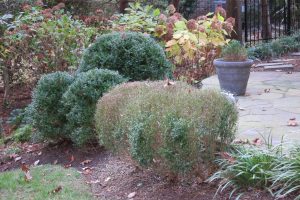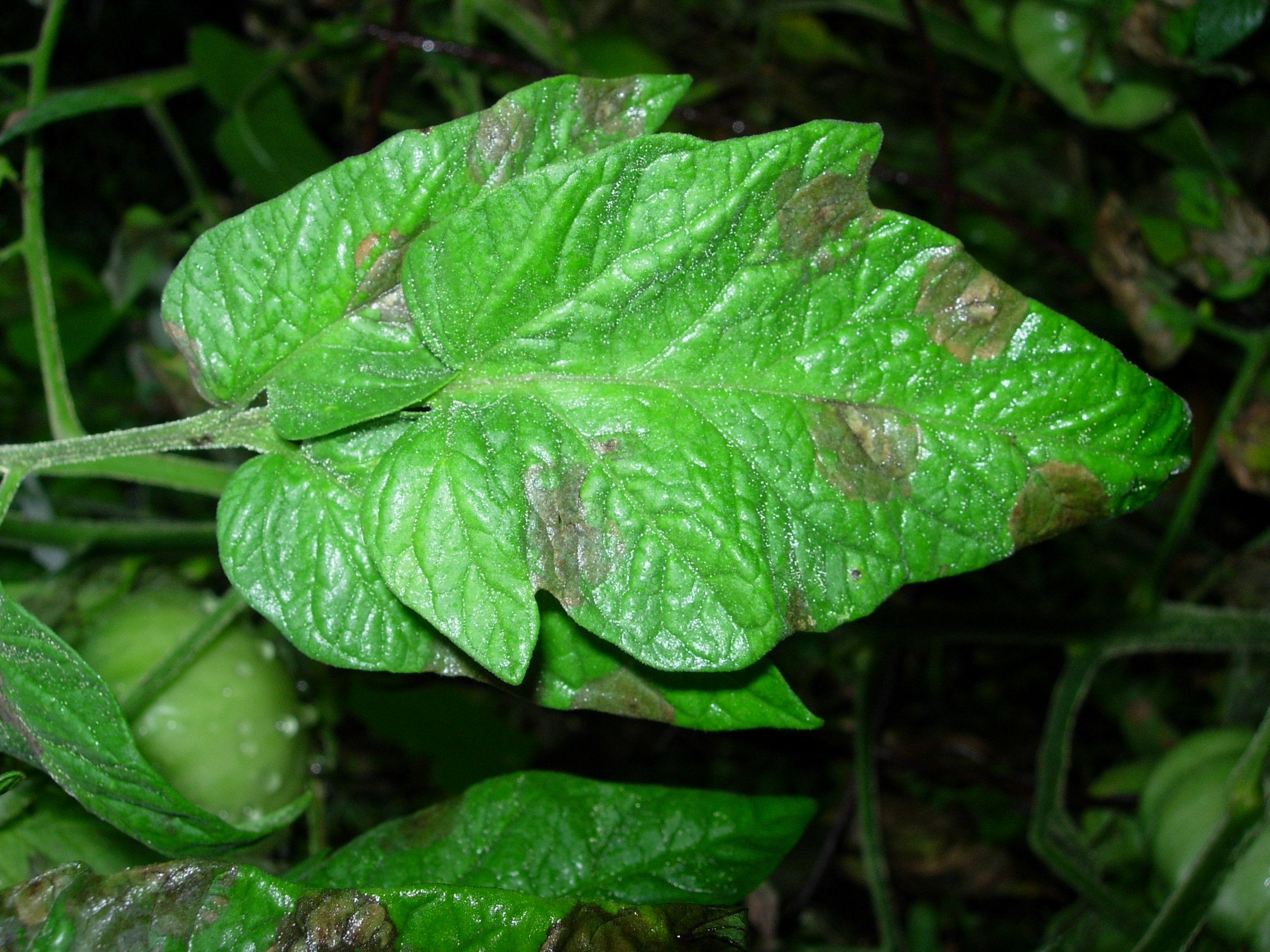Current situation in Virginia, 10/6/17
According to records of the Virginia Boxwood Blight Task Force, to date boxwood blight has been diagnosed in over 70 locations and approximately 30 counties in Virginia. There are likely additional undocumented incidences of the disease, for example, if no sample was submitted for diagnosis through Virginia Cooperative Extension or the Virginia Department of Agriculture and Consumer Services.
Although boxwood blight has been diagnosed in many counties in Virginia, there is no indication that it is widespread throughout any Virginia county. This is not unexpected, based on the current understanding of the biology of the boxwood blight pathogen. Boxwood blight is typically initially introduced into a new location on infected boxwood or other susceptible plants (e.g. pachysandra and sweet box). Holiday greenery containing infected boxwood can also introduce the disease into a new location. However, boxwood blight is not spread long-distance via wind currents. Therefore, one need not panic even if the disease has been found in one’s county. However, if the disease has been identified in one’s neighborhood, then there is a heightened risk of local spread of the disease.
After the initial introduction of boxwood blight-infected boxwood (or pachysandra or sweet box) into a location, neighborhood boxwood plantings are at risk for boxwood blight. There are a number of means by which the sticky spores of the fungal pathogen can move through a neighborhood. For example, they can be spread via contaminated pruning tools, spray hoses, equipment, vehicles, clothing, shoes, or infested leaves spread by leaf blowers. Wildlife (including birds), insects, domestic animals or humans that have been in contact with the spores may also move the infective spores through a neighborhood. Movement of the pathogen by many of these means has been documented in locations in Virginia.
To safeguard Virginia boxwood plantings and production, we call for community awareness and efforts to avoid accidental introduction of boxwood blight into new locations and prevent local spread of boxwood blight:
Specifically, we recommend and stress the following:
- Purchase boxwood, pachysandra and sweet box only from a nursery that is listed as a member of the Boxwood Blight Cleanliness Programand/or from a retailer who sells only boxwood produced by nurseries in the Boxwood Blight Cleanliness Program.
- If boxwood blight is suspected, immediately contact your local Extension office, which can submit a sample for confirmatory diagnosis. Where boxwood blight is confirmed, it is strongly recommended to immediately remove and double bag all diseased plants and fallen leaves as well as contaminated soil underneath the planting. The bagged waste should be removed to a designated landfill to mitigate disease spread to other boxwood in the landscape and other properties nearby.
- Employ only landscape professionals who are aware of how boxwood blight spreads, since boxwood blight can be introduced to properties through landscape maintenance activities. The fungal spores and fallen diseased leaves can be moved on tools, boots, tarps, hoses, clothing and vehicles. Landscape professionals should have a stringent sanitation plan in place to decontaminate tools, equipment, vehicles, clothing, shoes, etc. between landscape locations and other practices that minimize the chance to move the disease through landscaping activities.
- Adhere to best management practices outlined for boxwood blight, which are detailed in PDFs available at the Virginia Boxwood Blight Task Force website.
Additional Precautions for Landscape Professionals:
- Landscape professionals are strongly advised to walk through a site before beginning work. This is to identify any potential boxwood blight problems and/or risks. We have heard anecdotal reports from landscape professionals of both serious equipment contamination issues and spread of the disease by unexpected encounters of the disease in a landscape.
- Landscape contractors should at all times be equipped with a sanitation “kit” for disinfesting tools and equipment and take precautions to avoid moving spores on clothing, boots, hoses, vehicles, etc. Specific recommendations for effective sanitation methods are detailed on the Virginia Boxwood Blight Task Force website (under the “Sanitizers” tab).
- Landscape companies should ensure their staff are familiar with the symptoms of boxwood blight so that they can recognize the disease in the landscape. Laminated wallet cards with images of symptoms of boxwood blight and information on the Virginia Boxwood Blight Task Force website are available through your local Virginia Cooperative Extension
Resources: the Virginia Boxwood Blight Task Force website and Best Management Practices
Refer to the Virginia Boxwood Blight Task Force website for further information on boxwood blight. We recommend that you familiarize yourself with the appropriate Best Management Practice (BMP) for your situation. The BMPs are available on the website as PDFs.


